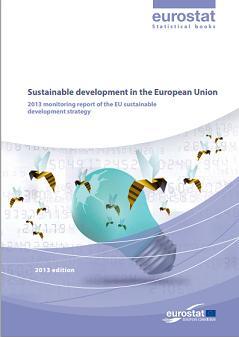Butcher, B., (2013), “Hollowing out and the future of the labour market – the myth”, VoxEU, 17 December. The labour market ‘hollowing out’ thesis suggests that there are far fewer intermediate-level jobs and far more low- and high-level jobs than two or three decades ago, primarily due to technological advancement. This column reviews recent research that finds little evidence in support of this conclusion. Though the composition of intermediate-level jobs …Read More
Is the Convergence Party Over? Labour Productivity and the Technology Gap in Europe
Filippetti, Andr., Peyrache, Ant., (2013), “Is the Convergence Party Over? Labour Productivity and the Technology Gap in Europe”, Journal of Common Market Studies, Vol. 51, Issue 6, pp. 1006-1022. Closing the technology gap to reduce labour productivity disparities across Europe is crucial for the European cohesion policy. This article explores the sources of labour productivity growth in Europe over the period 1993–2007 in light of the enlargement process. Labour productivity …Read More
Transitions in Labour Market Status in the EU
Ward-Warmedinger, M., Macchiarelli, C., (2013), “Transitions in Labour Market Status in the EU”, IZA Discussion Papers, N. 7814/2013. This paper presents information on labour market mobility in 23 EU countries, using Eurostat’s Labour Force Survey (LFS) data over the period 1998-2008. More specifically, it discusses alternative measures of labour market churning; including the ease with which individuals can move between employment, unemployment and inactivity over time. The results suggest that …Read More
Product Market Review 2013-Financing the Real Economy
European Commission, (2013), “Product Market Review 2013-Financing the Real Economy”, European Economy, 8/2013, Brussels. The Product Market Review published every two years focuses on the role of product market reforms. This edition’s focus is on the interaction between the real economy and the financial sector, asking the question: to what extent does the crisis in the financial sector cast a shadow on economic activity? The relationship between access to finance …Read More
The Euro Should Be Growth Friendly or Be Dismantled
Pissarides, C., (2013), “The Euro Should Be Growth Friendly or Be Dismantled”, Social Europe Journal, 16 December. Nobel laureate Christopher Pissarides was once a passionate believer in the benefits of European monetary union. In light of the damaging effects of the Eurozone crisis, he now writes that the euro requires urgent reforms to restore its credibility. He argues that the single currency should either be dismantled in an orderly way, …Read More
Sustainable development in the European Union
Eurostat, (2013), Sustainable development in the European Union: 2013 monitoring report of the EU sustainable development strategy, European Union and Eurostat: Luxembourg. Of the more than 100 indicators presented in this report, 12 have been identified as headline indicators. They are intended to give an overall picture of whether the EU has achieved progress towards sustainable development in terms of the objectives and targets defined in the EU Sustainable Development …Read More
Employment Outlook Survey
Manpower, (2013), “Employment Outlook Survey: Global – Q1/2014”, ManpowerGroup, December. Each quarter ManpowerGroup conducts research to measure employment trends* in the world’s major labor markets. To measure hiring expectations between January and March 2014, ManpowerGroup interviewed over 65,000 employers in 42 countries and territories. Despite continuing economic challenges and widespread uncertainty in the global labor market, the first-quarter research reveals that the majority of hiring managers will continue to add …Read More
The ECB’s Bridge Too Far
Eichengreen, B., (2013), “The ECB’s Bridge Too Far”, Project Syndicate, 10 December. Is Europe’s economic crisis mutating once again? If debt fears are now being superseded by the danger of deflation, as recent data suggest, the European Central Bank has its work cut out for it – and there is nothing to suggest that it is up to the task. The numbers are alarming. Core inflation (the consumer price index …Read More
Debt and secular stagnation
Fatas, A., (2013), “Debt and secular stagnation”, Antonia Fatas on the Global Economy Blog, 10 December. In a recent post Paul Krugman refers to the potential link between rising levels of debt prior to the 2008 crisis and the current discussion on secular stagnation. The argument can be illustrated by the chart below (borrowed from Krugman’s post). Quoting from Krugman’s post: “Debt was rising by around 2 percent of GDP …Read More
The LIBOR scandal: What’s next ? A possible way forward
Brousseau, V., Chailloux, A. and Durré, A., (2013), “The LIBOR scandal: What’s next ? A possible way forward”, VoxEU, 09 December. In the aftermath of the LIBOR scandal, it is important to re-establish a credible reference rate for the pricing of financial instruments and of wholesale and retail loans. The new candidate must meet the five criteria suggested by the Bank for International Settlements – reliability, robustness, frequency, availability, and …Read More





